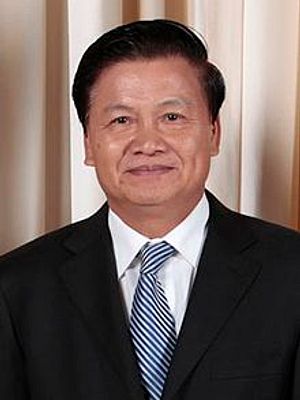On May 2, Lao Prime Minister Thongloun Sisoulith visited Singapore at the invitation of Prime Minister Lee Hsien Loong. Though both sides discussed matters across several realms important to the advancement of their bilateral relationship, economic issues dominated the trip.
Singapore and Laos established diplomatic ties over four decades ago, and both are part of the Association of Southeast Asian Nations (ASEAN). But though Singapore is already among the biggest investors in Laos and has also been a significant contributor through other means like capacity-building, both sides have been trying to strengthen the economic dimension of the relationship even further in recent years.
On the one hand, tiny, landlocked Laos has been increasingly opening up to the outside world, and Thongloun, who had served as the country’s foreign minister for a decade before his ascension to the premiership last year, is known for his internationalist outlook that seeks to diversify his country’s relationships beyond neighboring China (See: “Laos in the ASEAN Spotlight: Opportunities and Challenges”). Singapore, for its part, has supported the idea of Laos transforming itself from a landlocked nation to a more connected one, while its companies are also keen on exploring opportunities in lesser developed Southeast Asian markets like Laos and Cambodia.
Little surprise, then, that economic issues have been dominating recent visits between high-ranking officials of both countries. When Singapore’s President Tony Tan Ken Yam visited Laos in January, various aspects of economic development were in the spotlight, including air connectivity, human resource development, education, healthcare, and investment. Though he had noted both the active presence of Singaporean companies in Laos as well as the strengthening ties between the two nations – including an agreement on taxation and an expansion of flights – he also urged more firms to be present, calling on them to take a longer-term view on Laos’ development.
A similar message was at play during Thongloun’s one-day visit to Singapore this week, where he was accompanied by several ministers as well as a business delegation. During his meeting with Prime Minister Lee Hsien Loong, various areas of economic cooperation were discussed according to Singapore’s foreign ministry, including air connectivity and tourism. During their talks, Lee said Singapore’s expertise in areas like logistics, urban planning, healthcare, and education can complement Laos’ development priorities, and that the city state’s status as a regional economic hub positions it well to be a gateway for Laos to the world.
Thongloun also then gave a keynote speech at a luncheon hosted by the Singapore Chinese Chamber of Commerce & Industry (SCCCI) and IE Singapore. During the speech, he unsurprisingly touted Laos’ vision for economic development and highlighted opportunities for businesses – particularly in areas like agriculture and renewable energy.
A couple of agreements were also reached during Thongloun’s visit. At the aforementioned form, a memorandum of understanding (MOU) was signed between SCCCI and the Lao National Chamber of Commerce and Industry (LNCCI) to enhance business and investment links. In addition, Temasek Foundation International (TF Intl) and ITE Education Services (ITEES) announced a capability development program for 60 hospitality trainers from Laos, a two-year program which will commence in December 2017.
Of course, the trip itself was not purely economic in nature. Indeed, Thongloun’s one-day visit to the city-state was quite a busy one, with meetings with top Singaporean leaders – where they also discussed regional and international issues apart from the bilateral relationship – his keynote address, as well as a trips to Nanyang Polytechnic to receive a briefing on Singapore’s polytechnic education system and the National Orchid Garden where an orchid hybrid was named in his honor.
Both sides also reinforced the importance of people-to-people ties, a dimension that was also emphasized during the Singapore premier’s trip to Laos back in January. Indeed, Thongloun himself personifies this, having spent three months in 1998 attending an Executive English Language and Communication Skills course as part of a program in the bilateral relationship at Nanyang Polytechnic – the same institution he visited this week.
Addressing the business forum in English, his non-native language, Thongloun referenced the program he had attended.
“[M]y English is not very … not so good,” Thongloun said to the forum, “because I have only three months in Nanyang Polytechnic course long time ago – but I try.”
































